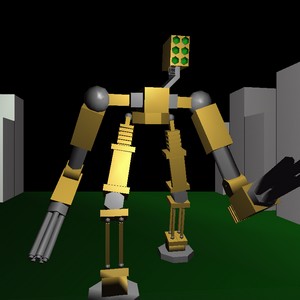TinyGL.js
Created by Codezigineer
0
Download
Description
TinyGL.js
TinyGL.js is a JavaScript library providing a tiny subset of OpenGL 1.1 compatible API, which can be used to make 3D graphics on canvas. TinyGL.js is based upon TinyGL's implementation written in C and compiled to JavaScript via Emscripten. It only uses software rasterization and does not require WebGL to run, therefore possible to use in Scriptable.
Current implementation is based on an enhanced and bug-fixed branch of TinyGL 0.4.
Getting Started
This library is in a single JavaScript source file tinygl.js. It should be included first:
const createCtx = importModule("TinyGL");
Then, we create a new TinyGL context with the parameters being width and height:
var gl = createCtx(1024, 768);
The semantics is almost the same with what we do for a Canvas2D or WebGL context. Now that we have the rendering context, let's begin with some basic primitives:
gl.viewport(0, 0, canvas.width, canvas.height);
gl.clearColor(0, 0, 0, 0);
gl.clear(gl.COLOR_BUFFER_BIT);
gl.matrixMode(gl.PROJECTION);
gl.loadIdentity();
gl.frustum(-2.0, 2.0, -2.0, 2.0, 6.0, 20.0);
gl.matrixMode(gl.MODELVIEW);
gl.loadIdentity();
gl.translatef(0.0, 0.0, -16.0);
gl.color3f(1, 0, 0);
gl.begin(gl.POLYGON);
gl.vertex3f(-1, -1, 0);
gl.vertex3f( 1, -1, 0);
gl.vertex3f( 1, 1, 0);
gl.vertex3f(-1, 1, 0);
gl.end();
gl.flush();
gl.swapBuffers();
Here comes our first polygon with TinyGL.js :-) See what it outputs here.
Examples
Environment Requirements
TinyGL.js (This one) depends on Typed Arrays. Make sure your environment supports these features to run codes with TinyGL.js.
Known Issues
- Canvas width must be multiples of 4 according to TinyGL's restriction. Otherwise, there may be some columns not refreshed.



